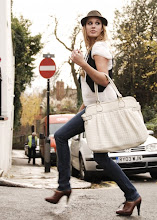
Perched animatedly in the base of my Nanna’s decadently imposing wardrobe, I recall the first of many unforgettable moments that delightfully and whole-heartedly took my breath away. As I crouched amongst an array of opulent coloured firs, leathers and suedes, alongside rich brocade silks in hues of magenta, emerald and gold, my mother waltzed down the couple of steps that led from the en-suite, to the minimalist warmth of my grandparents’ bedroom.
The dress was timeless – a floor-length, figure-hugging gown in midnight blue. Around her neck sat the winter-white shrug that decades of elegant soirees had yet to tarnish; its feathers, softer than the blush of her cheek. I remember in that clock-stopping moment wishing for a future in those shoes, unaware of anything to contradict such romantic fathom. I have no memory of where she went that night – I couldn’t tell you the season, or the year – but I’ll never forget that smell of Yves Saint Laurent as she kissed me goodbye.
As the youngest after a generation of 17 boys, I was born into a great, and altogether rather daunting responsibility to be everyone’s little girl. My Nanna – probably the most glamourous and elegantly poised lady I’ve been blessed to know – was therefore most disappointed when, at the age of about two, I’d taken to wearing most of my closet at once. A classic collection of patchwork hand-me-downs would hang off my toddling frame – each day having personally taken the time to create fresh ensembles to greet my brother at the school gate. Mum always encouraged this slightly obsessive trait, objecting to my grandmother’s wishes of dressing me herself. It wasn’t until I started school that I was stripped of that formerly unappreciated privilege.
Thrown into the uniformity of the British education system, it quickly became clear that the ranks of popularity were directly correlated to the length of your skirt, the height of your heels and the size of your bra. At this point, style was dictated by what Mizz and Sugar said would make dreamy boys take you to the movies – any personal expression, it was clear, would have to be put on hold for the next few years. I pleaded for Kickers, Adidas poppers and Buffalo boots. I made perfume out of buttercups and Palma Violets. I crimped my hair.
For my fifteenth birthday, Mum gave me a subscription to Vogue. I remember, as I peeled open its beautifully glossy cover, the overwhelming wave of intrigue that shot through me; a catalyst for the realisation that I no longer needed to conform. The models danced as the pages turned, and the features flowed – silk-like – as they conjured images of foreign runways and exotic shoots. I’d discovered a new place to escape to, unwind in, dream about.
For me then, style was about fashion, and the high street was my playground. Shopping became a substitute for all I craved in that unattainable world of flash bulbs and couture, and getting dressed became an art again. I was reintroduced to my two year-old self, this time armed with a teenage body and a £42 clothing allowance. At a time when throw-away fashion had begun to take flight, I’d meet friends outside Topshop and spend Saturday afternoons whiling away hours looking for inspiration in the mannequins – drawing us into every enchanting window. We inspired each other too, teaming together outfits that we’d never look twice at. Their eyes saw from the angles that mine couldn’t, and it created the eclectic style that we’ve all grown into – in our own inimitable ways.
It might be that all I needed was a wake-up call – a moment to slap me hard around the face and tell me that life revolves around more than understanding the latest trends, or having my favourite shoes lusted after. But even when Dad passed the phone over to my mother – to tell me the news that would completely change my whole world – I can remember exactly what I was wearing.
For two years, I watched her slip away, gracefully and heroically surrendering to the forces that sit just outside of this vulnerable existence. The fact that she never complained, never swore, and only shed a tear when she saw our grieving, highlights just another testament to her outstanding peculiarities. She fought, completely selflessly when she longed to give up, and took us shopping for make-up, hats, and wigs to keep her mind off things. She laughed when speech was too hard.
Today, my understanding of style is that it’s more of a presence – a feeling that can’t be offered purely through clothing or make-up or labels – but through projecting an honest image of yourself into your surroundings. Mum encouraged me to find my own style, never imposing, but gently guiding me to where I needed to go. She taught me about morals, elegance and inner-beauty before I knew anything about the tangible world of fashion and beauty. She taught me to read between the lines, and fall in love with the people that mattered – the ones that don’t need Chanel and Manolo to light up a room.
I’m sure in fifty years time, I will look back and cower at my curious attempts of staying at the cutting-edge. I won’t understand the newest trends, or the next generation of designers. But maybe on the eve of my interment, my children will reflect in the same way as I do now – thanking their mother for every word of encouragement, every underappreciated submission, and every individual nuance that could be passed on, so that their life can be lived in the exact style that ultimately, only they can choose.


